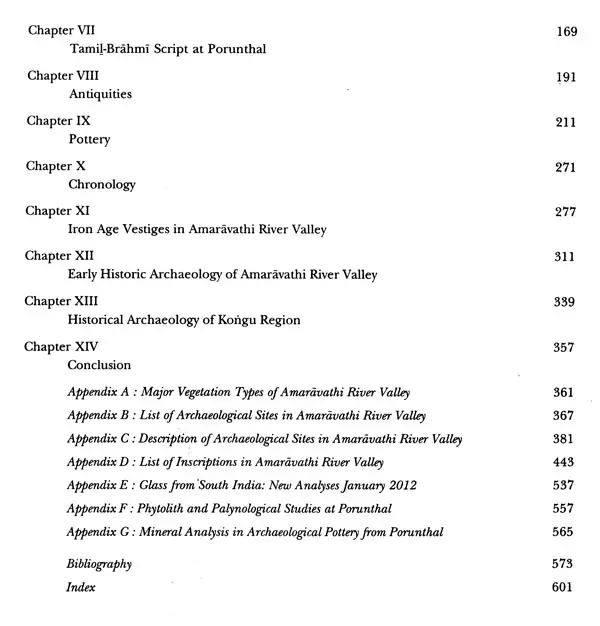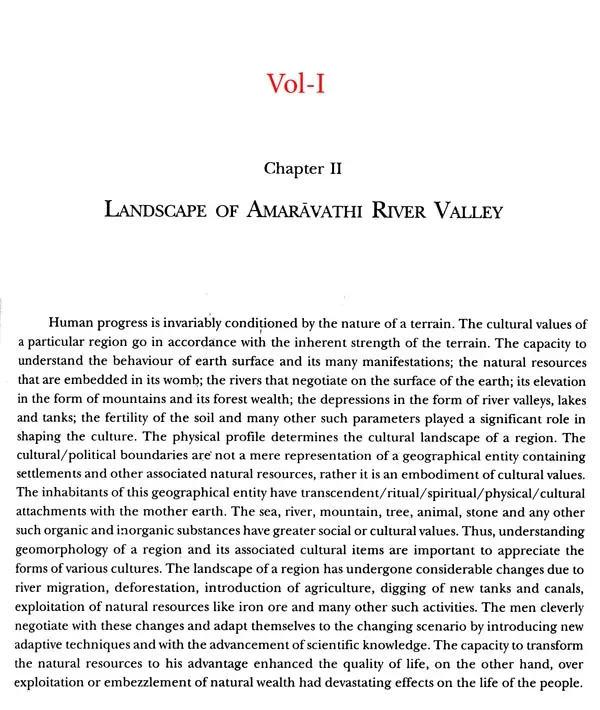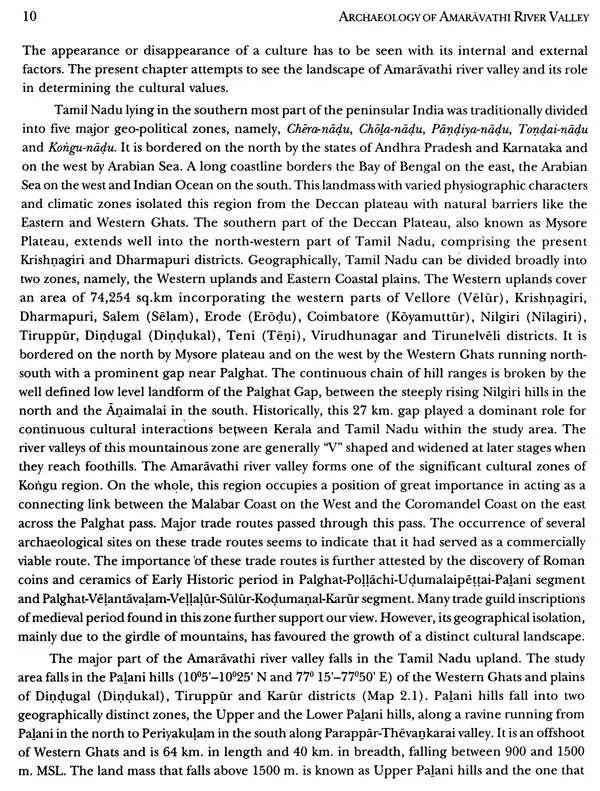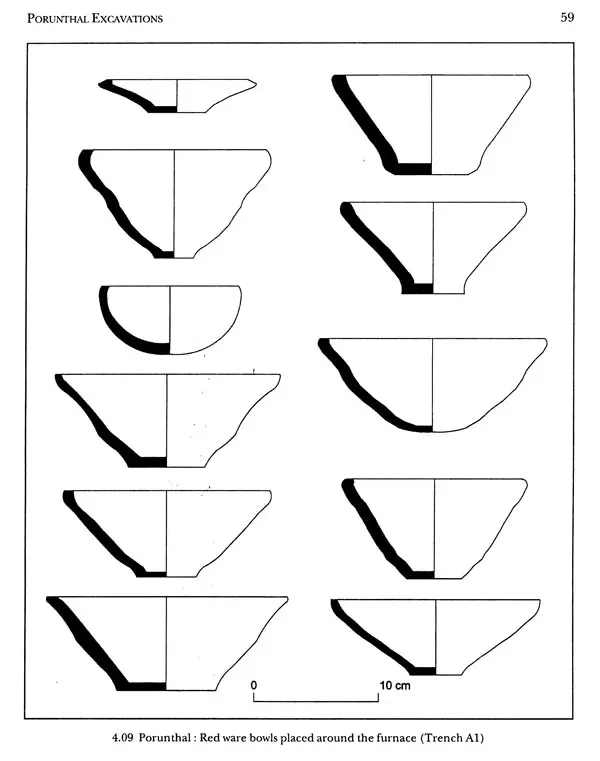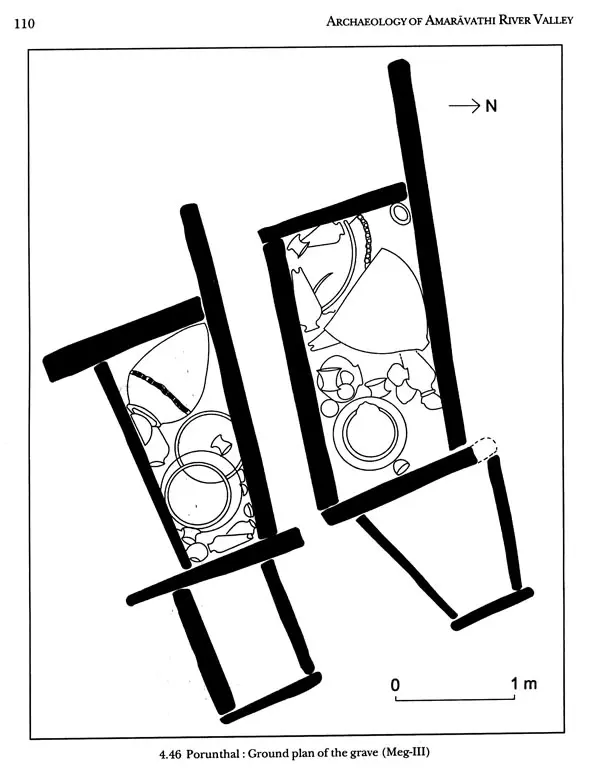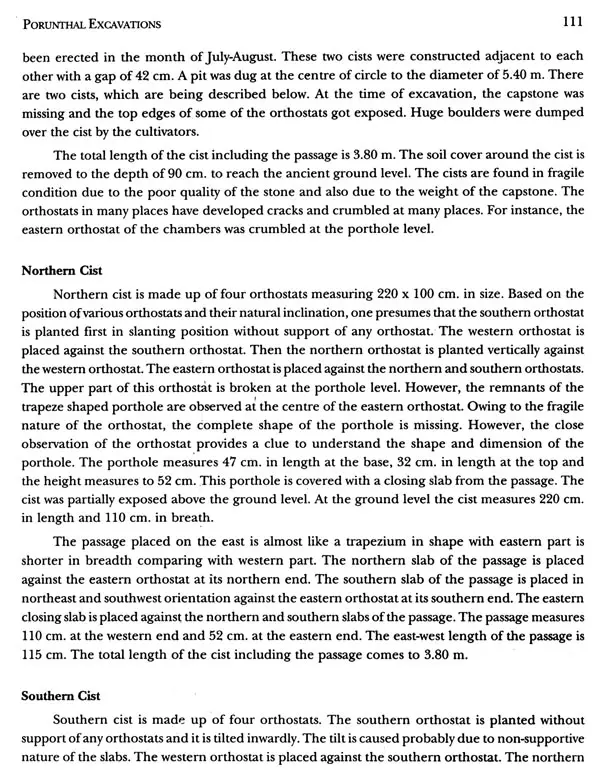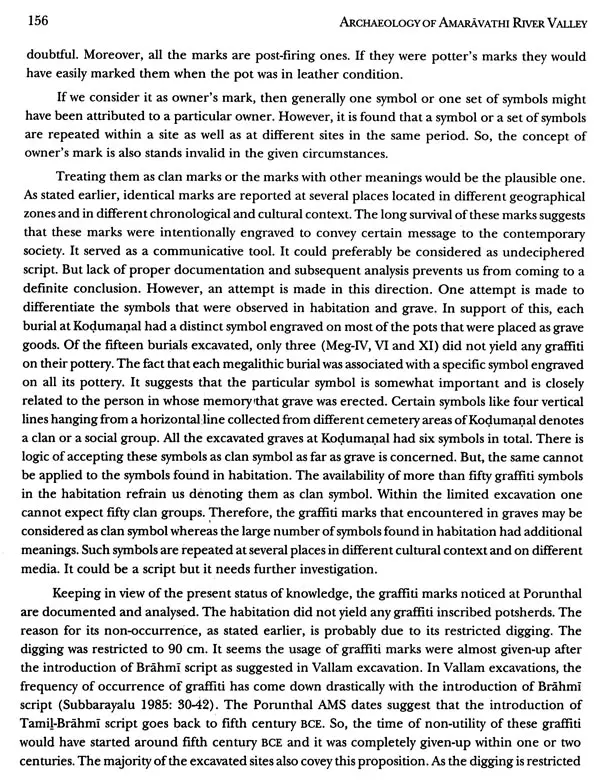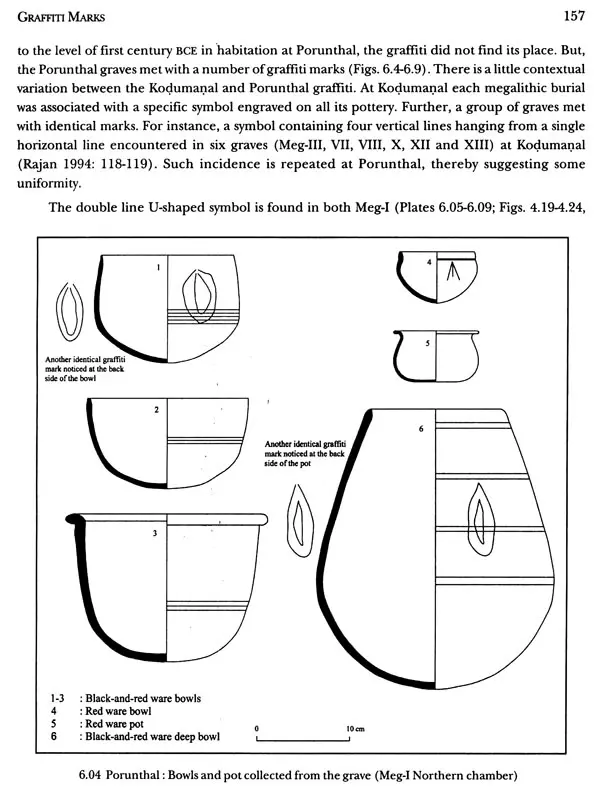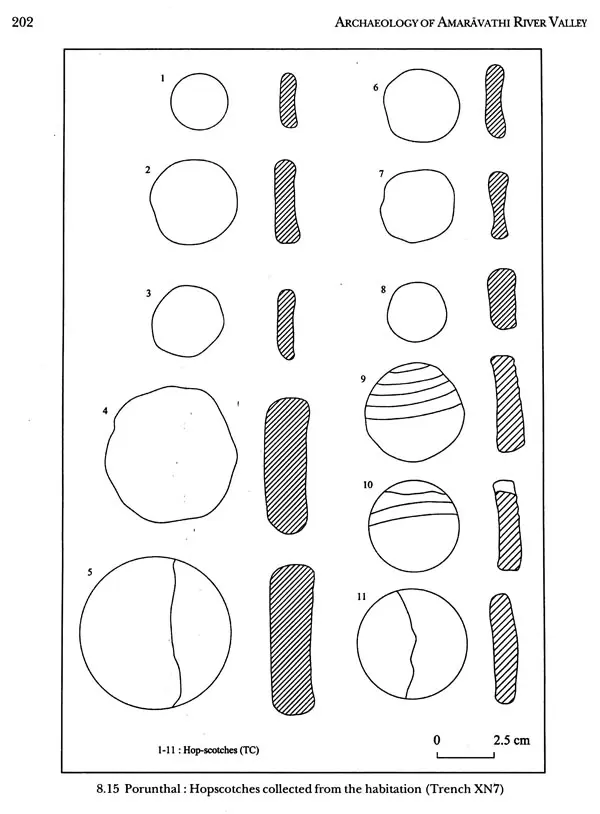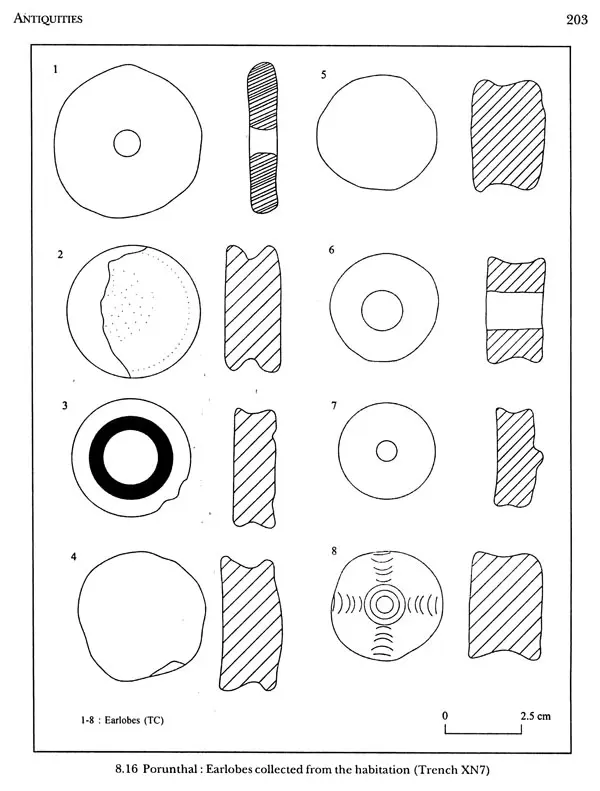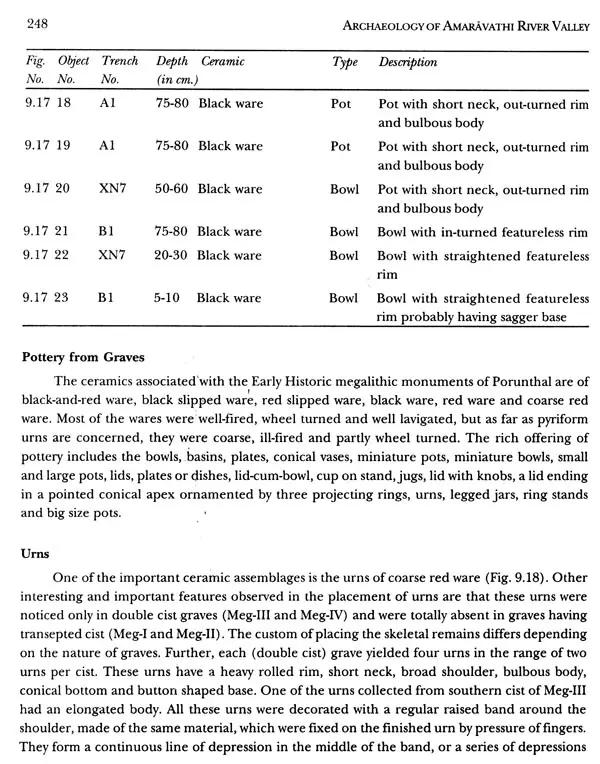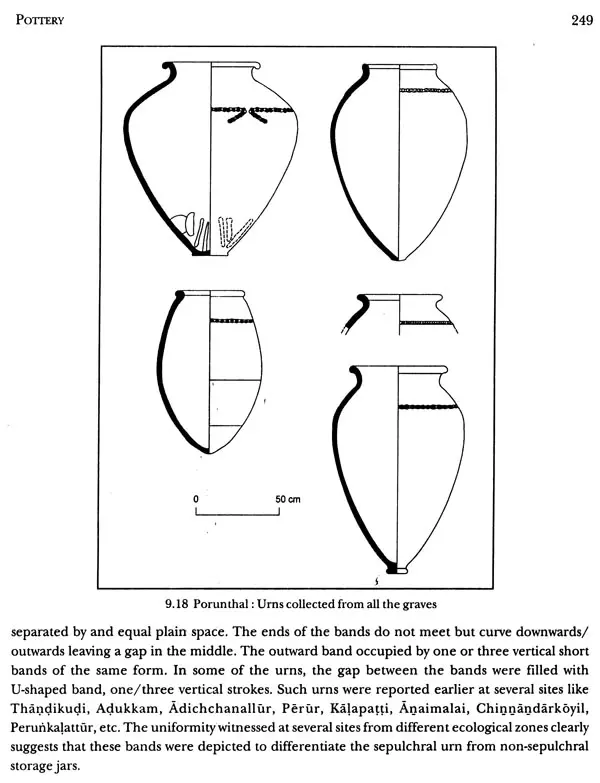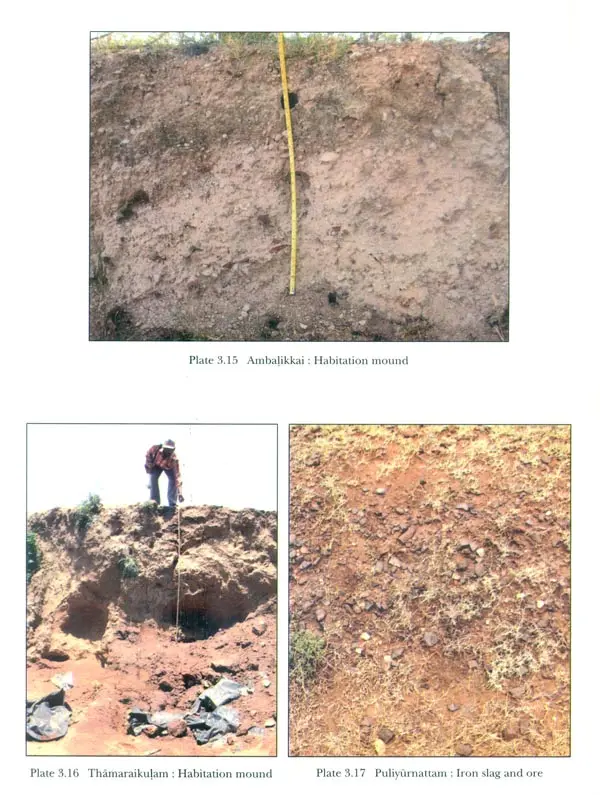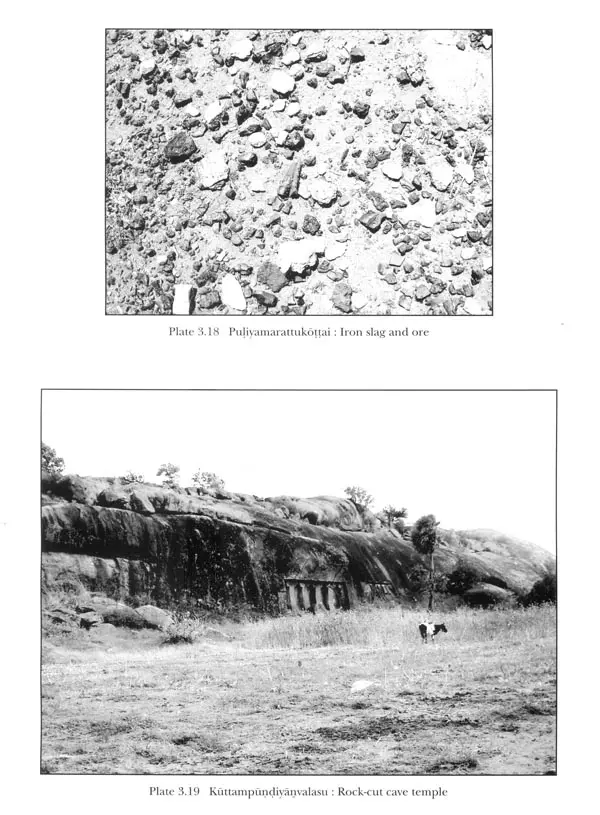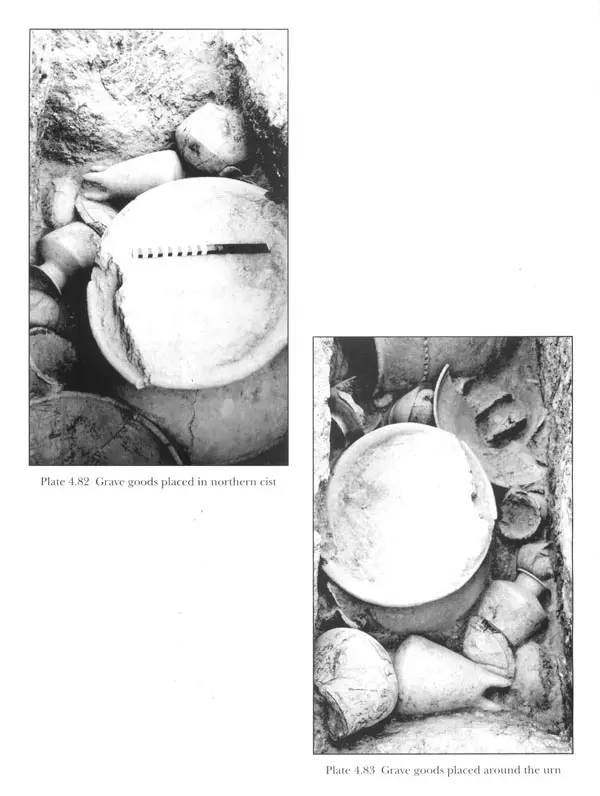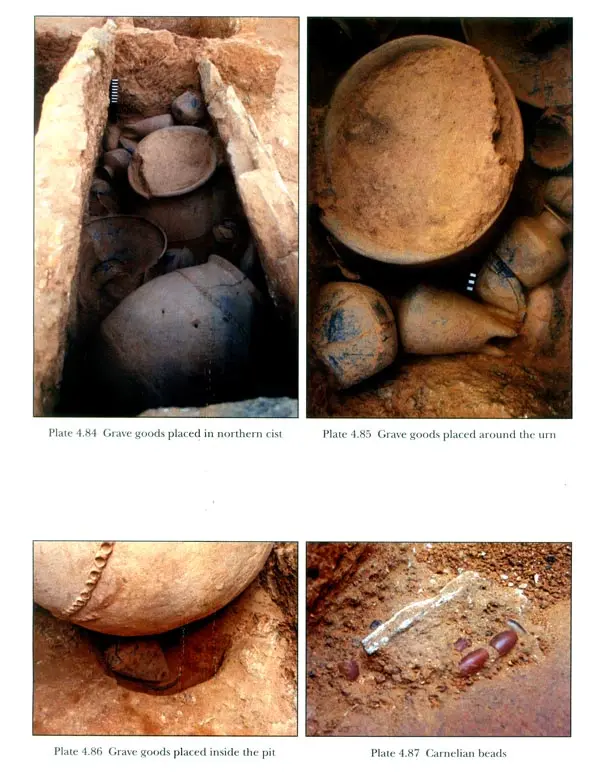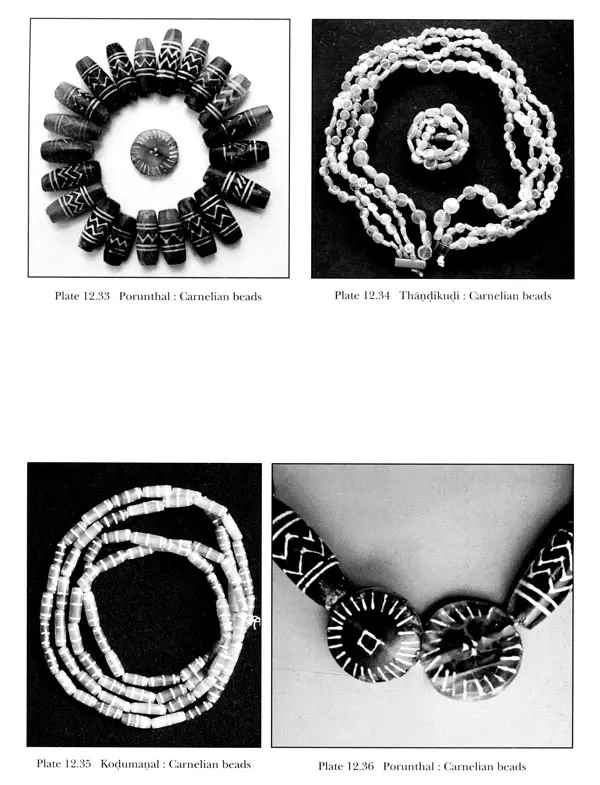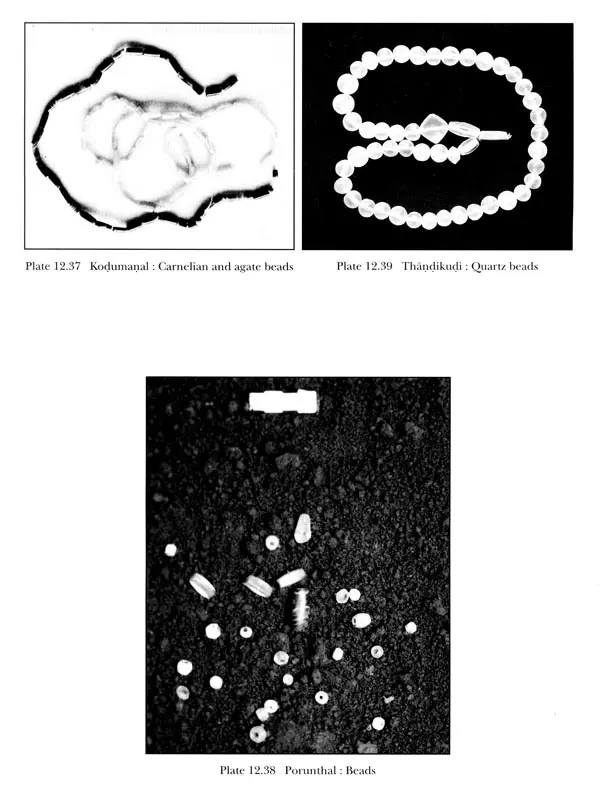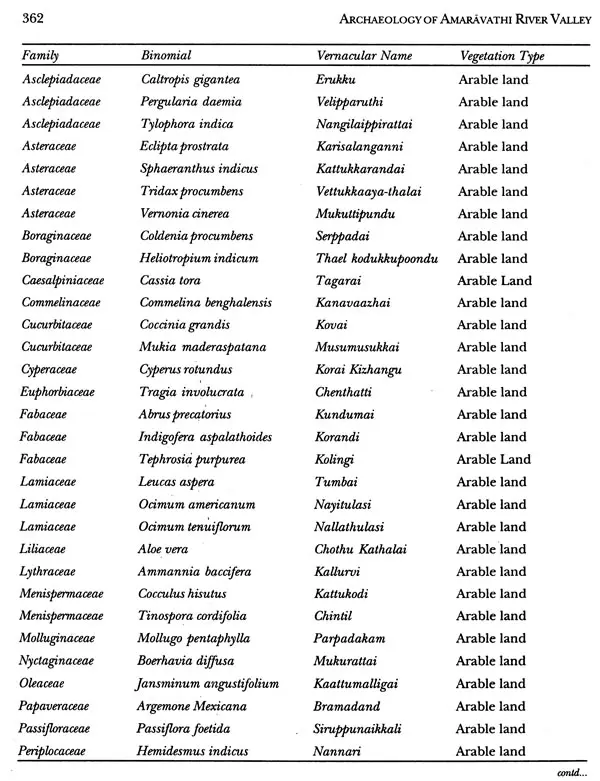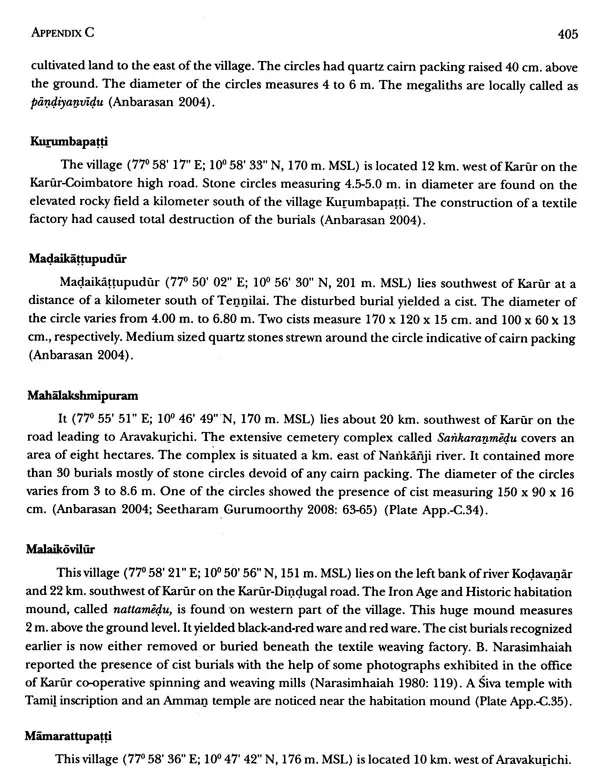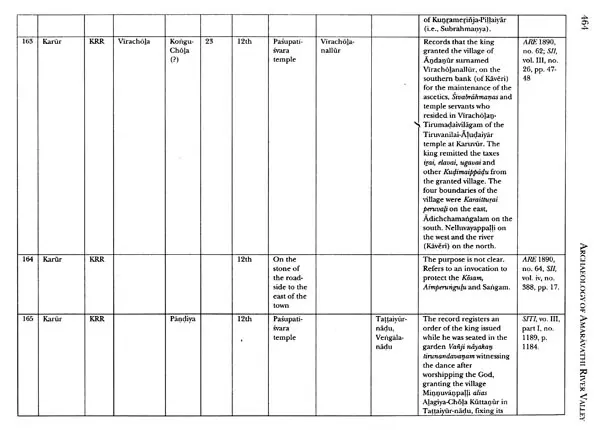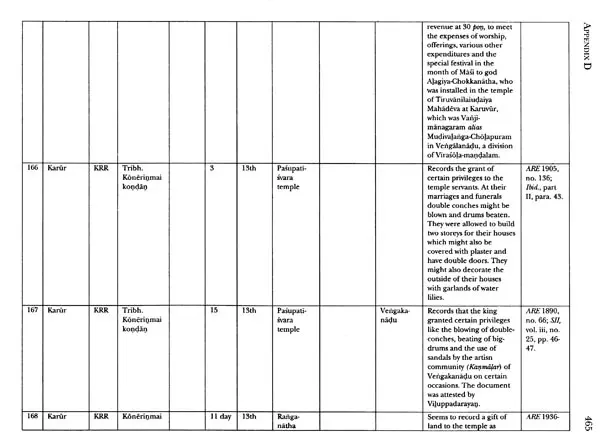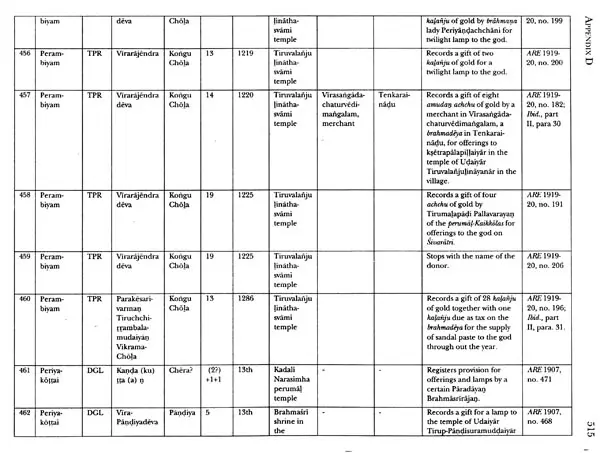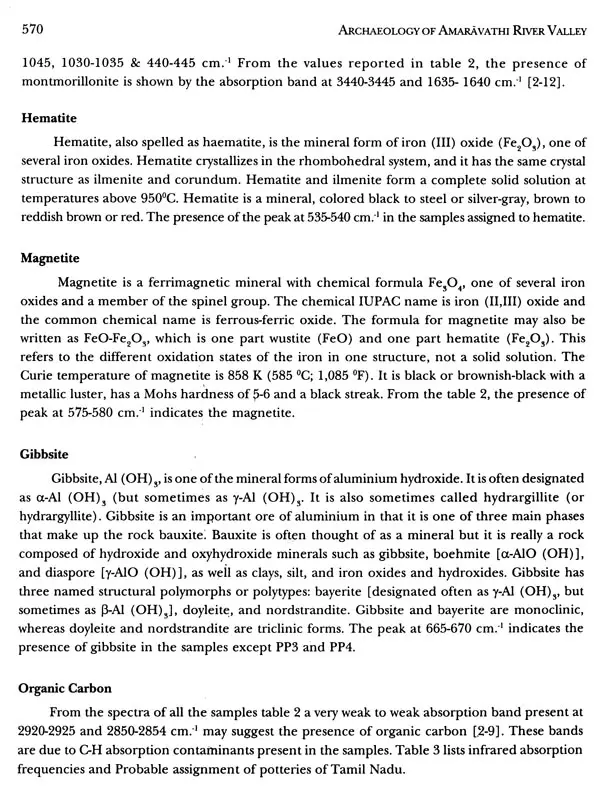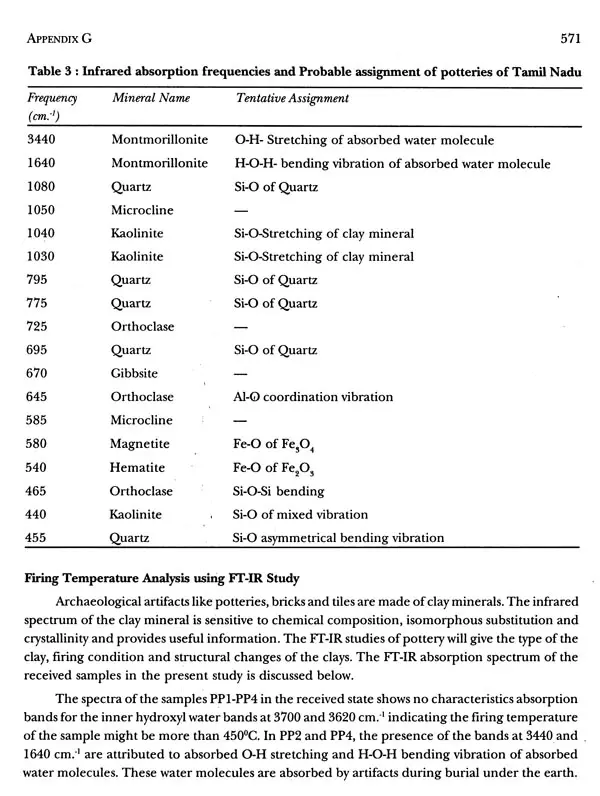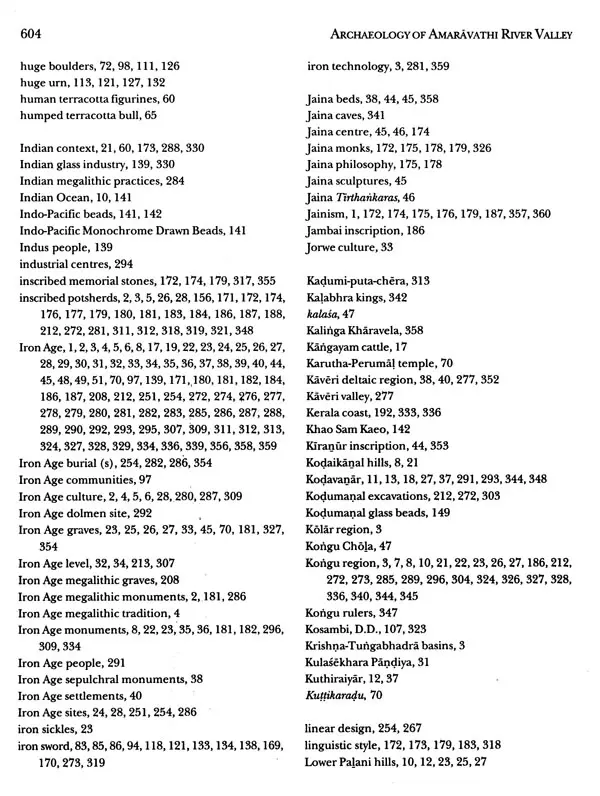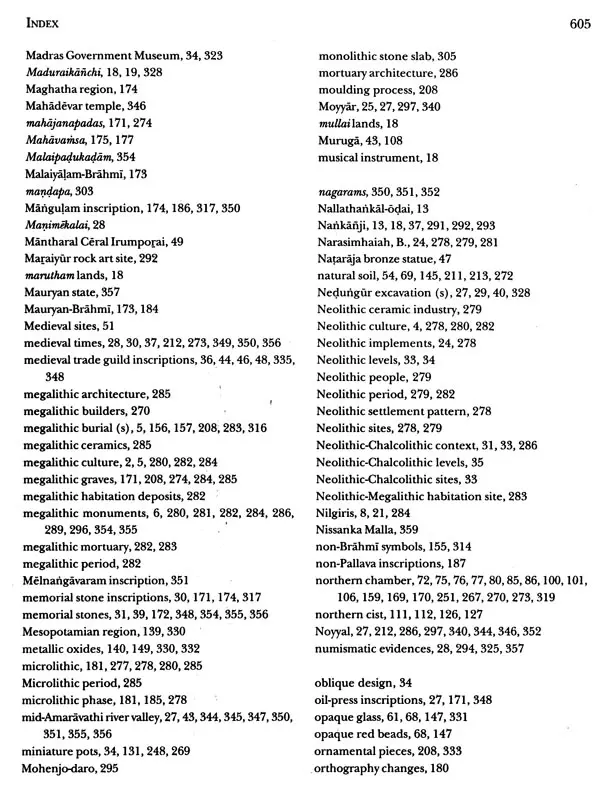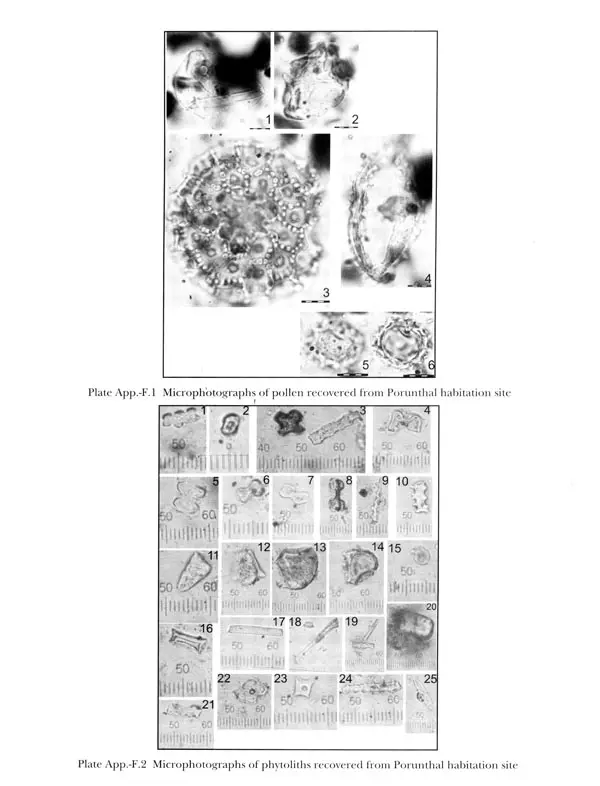
Archaeology of Amaravathi River Valley- Porunthal Excavations (Set of 2 Volumes)
Book Specification
| Item Code: | UAF499 |
| Author: | K. Rajan and V.P. Yathees Kumar |
| Publisher: | Sharada Publishing House, Delhi |
| Language: | English |
| Edition: | 2014 |
| ISBN: | 9789383221011 |
| Pages: | 802 (Throughout B/w and Color Illustrations with 30 Maps) |
| Cover: | HARDCOVER |
| Other Details | 11.00 X 9.00 inch |
| Weight | 2.93 kg |
Book Description
V.P. Yathees Kumar is Assistant Archaeologist, Archaeological Survey of India. He obtained M.A. in History, Archaeology and Manuscript logy from Tamil University, Thanjavur and Ph.D. from Pondicherry University. He has discovered more than five hundred archaeological sites in Bhavani, Vaigai and Amaravathi river valleys. He took active participation in Thandikudi, Kodumanal and Porunthal excavations & in the preparation of Historical Atlas of South India.
In both these areas his contribution has been fundamental and assured for Tamil Nadu a major place in the archaeological horizon of the country as a whole. That the date of the beginning of Tamil-Brahmi has been pushed back on the basis of careful digging and radiocarbon dates to 500+ Bee at Kodumanal and Porunthal in the face of strong opposition from the leading Tamil epigraphers is a great achievement in itself.' Secondly, the entire focus of Tamil Nadu archaeology has now shifted from mere megalith-counting to the detailed studies of the corresponding settlements and the patterns of their distribution. This second concern with the nitty-gritty of settlements found one of its best expressions in the multi-volume Catalogue of Archaeological Sites in Tamil Nadu with him as the principal author. As far a major historical area of the region is concerned, this volume demonstrates what a careful study of its settlement geography can achieve.
To understand the proper significance of this volume one can do no better than compare it with R Nagaswami's earlier volume on the site of Karur located at the junction of the Amaravathi with the Kaveri. Nagaswami's volume was based entirely on the miscellaneous antiquities found in the sands of the Amaravathi river bed. However, interesting these antiquities may be, the) have their own limitations because they are without their contexts. In the hands of Rajan and hi student co-author Yathees Kumar, the basic human history of the Amaravathi river has come alive phase by phase and segment by segment. This is the type of grassroots history that we need, from all parts of the country, but till now it is available in detail mostly from the Amaravathi valley and the related area.
The early antiquity of Brahmi script in what the Tamils call the Kongu country or the modern Coimbatore-Salem stretch pushes back the archaeological evidence of this script by more than 200 years, but more than that, the sheer number of finds of inscribed potsherds of this period in the Tamil area raises major historical questions about the beginning of historical script and writing in India. The presence of inscribed potsherds in other parts of the country including the Ganga valley is much less than what has been found at Tamil Nadu sites.
Does this have any historical implication? Even in the later historical contexts, south India has a much larger series of epigraphic documents than any other part of the country. Why it should be so is not yet clear but the fact that this is rooted deep in the beginning of Brahmi writing which accommodated the easy writing of Tamil alphabets poses important historical questions.
Professor Rajan's interest in the Kongu country has resulted in a mass of documentation regarding various facets of its history - settlements, trade, irrigation and metallurgy. For instance, it was at Kodumanal that he found the pre-Christian Era evidence of the legendary Indian steel Wool%. It is time the historians of the south came out of the warp of worn-out historical ideas and began to Look at the land itself and draw conclusions from there. In fact, this is applicable not merely in the case of the south but also everywhere else in the country where the study of history has to be rescued from its cliché-ridden ideas. Through the publications of volumes like the present monograph we are being shown the way. I wish Professor Rajan and his like-minded colleagues and students many more years of field-research which reflect their close commitment to, and love for the land they have come to know well.
Such situations could be witnessed in Iron Age and Early Historic cultural arena of south India. To understand this complex issue, we need micro level studies. The present book is one such attempt. The cultural transformation from Iron Age to Early Historic becomes a vexed problem in south Indian archaeology. The basic reason for this precarious situation is in identifying the cultural association of megalithic monuments. Designating these memorial edifices that survived for more than a millennium in different social, cultural and environmental contexts with a simple term as megalithic led to this present situation. To overcome this critical state, we need to differentiate the Iron Age megalithic monuments from the Early Historic megalithic monuments. The second task is fixing the beginning of Early Historic period in south India. The beginning of Early Historic is still a matter of debate. The historians, linguistics, epigraphists, numismatics and archaeologists are trying to draw their conclusion based on data retrieved from their own source of study. The diverse and complex primary sources still prevent the scholars to come to a definite date for the beginning of Early Historic. In general, the availability of the deciphered written document is considered as the beginning of historical period. In that sense, based on the Brahmi inscription of Asokan times, third century BCE is considered as the beginning of Early Historic period in India. Therefore, the date of introduction of Brahmi script is very crucial to understand the beginning of Early Historic in south India. The historical inputs extracted from these Brahmi inscriptions engraved on stones, relic Flaskets, coins and inscribed potsherds are considered as a chronological anchor. Due to over-emphasis on a particular class of evidence, i.e. Brahmi script in this case, all other social parameters like the usage of coins, formation of trade routes, the size of the settlement, the form';1lation of various clan groups, the emergence of state and so on so forth are not seriously engaged. Drawing a chronological demarcation line between these two cultures is still a very complex issue due to poor evidence, documentation and understanding.
The lack of region-specific chronological control further aggravated the problem. So the date of Brahmi has become crucial in ‘understanding the context.
These acculturation processes could be seen in social, economic, political and religious domains.
Beyond initial demographic expansions and subsequent migrations, trade played a dominant role in carrying cultural traits of a region to new areas of attraction. It is generally believed that the spread of religion, particularly Jainism and Buddhism, is due to expansion of trade rather than any intentional internal pushing and external pulling. Thus, understanding the emergence of Early Historic is a fascinating and complex affair.
The present evidence suggests that the emergence of Early Historic is not uniform throughout Tamil Nadu and this is perhaps due to varied ecological settings. The beginning of Early Historic period is still a matter of debate. The archaeologists, historians, linguists, epigraphists, numismatics and literary experts are trying to draw their conclusion based on data retrieved from their own sources of study. The diverse and complex primary sources still prevent the scholars to come to a definite date for the beginning of Early Historic period.
In general, the availability of deciphered written document is considered as the beginning of historical period. In that sense, based on the Brahma! inscription of Asokan times, third century BEE is considered as the beginning of Early Historic period in India. Therefore, the date of introduction of Brahmi script is very crucial to understand the beginning of Early Historic period in south India, for that matter the whole of Indian subcontinent. The historical evidences extracted from these Brahm! inscriptions engraved on stones, relic caskets, coins and inscribed potsherds are considered as a chronological anchor. Due to over-emphasis on a particular class of evidence, i.e., Brahm! script here, all other social parameters like the usage of coins, formation of trade routes, size of the settlement, the formulation of various clan groups and the emergence of state were not seriously engaged. These parameters did not emerge as one time cultural package within a short time-span but developed and evolved over a long period as-a social product. The cultural traits formed during Neolithic-Chalcolithic and Iron Age regime could be considered as a gestation period. The remarkable developments that had taken place in different spheres of the society during previous cultural phase culminated into the Early Historic period. Therefore, it is necessary to study closely the cultures of a region that existed prior to Early Historic period to understand the real foundation of Early History.
In Tamil Nadu, the culture that proceeds the Early Historic period is designated with different terms like proto-historic culture or megalithic culture or Iron Age culture. The term megalithic culture purely denotes a type of mortuary practice prevailed in this region prior to Early Historic and to some extent followed in Early Historic.
Understanding this culture in a given cultural context is crucial to understand the various cultural processes that had taken place in different segments of the society.
Book's Contents and Sample Pages


